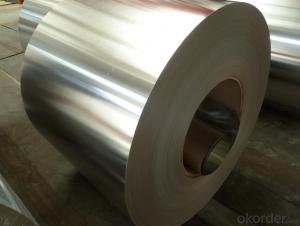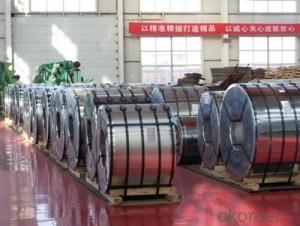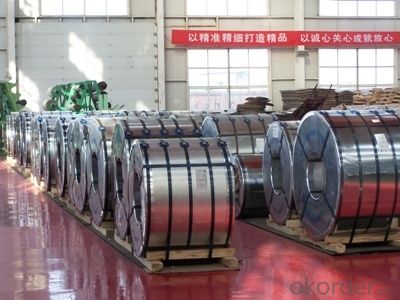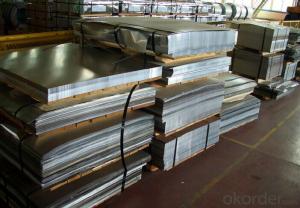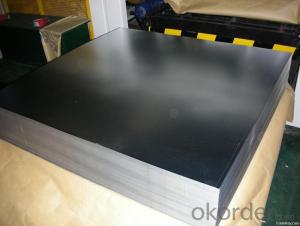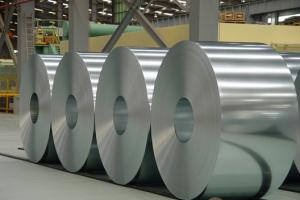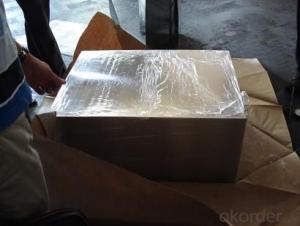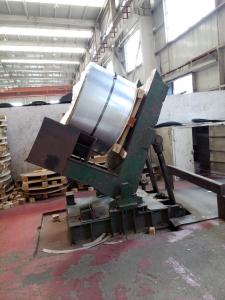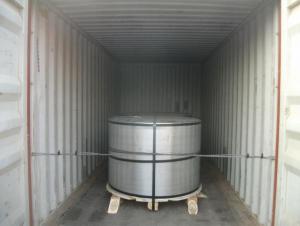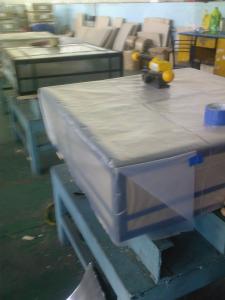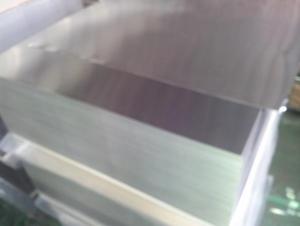Tinplate Sheets for Chemical Cans Use with 0.19mm thickness
- Loading Port:
- Shanghai
- Payment Terms:
- TT or LC
- Min Order Qty:
- 25 m.t.
- Supply Capability:
- 1000 m.t./month
OKorder Service Pledge
OKorder Financial Service
You Might Also Like
1.Structure of Tinplate Sheets for Chemical Cans Use with 0.19mm thickness Description
Tinplate Sheets for Food Cans Use with 0.18mm thickness is one of the metal packing materials, which is widely used for making painting cans ,chemical package cans , electrical cable ,battery and metal printing etc.
2. Main Features of the Tinplate Sheets for Chemical Cans Use with 0.19mm thickness
Steady and high quality
Fast shipment
Good experience for export work
For the surface, Plate uniform in thickness,uniform and smooth tin coating, without flaws,rusts,scratch,wave,nick of tin coating etc.
Thin Thickness
3.Tinplate Sheets for Chemical Cans Use with 0.19mm thickness Images
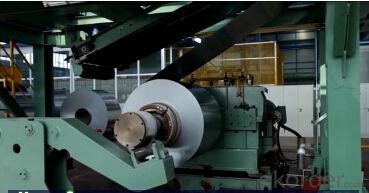
4. Tinplate Sheets for Chemical Cans Use with 0.19mm thicknessSpecification
Standard : GB2520-2000 ,JIS G3303
Steel type : SPCC
Coating : 2.8/2.8
Surface: Bright, Stone ,
Thickness:0.19
Width :600MM~1000MM
Temper : T1~T5
Package: tinplate wrapped completely with an inner cover of plastic or waterproof papers with vorners protected with metal angels.
5.FAQ of Tinplate Sheets for Chemical Cans Use with 0.19mm thickness
A. What is the package of tinplate? (Referred as below)
For sheets, thin plastic film + rust-proof paper + metallic cover + metallic angles+ steel band strips + fumigated wooden pallet.
For coil, thin plastic film + rust proof paper + metallic cover + steel band strips + fumigated wooden pallet
B. The surface of tinplate could you supply?
Stone finish, Bright finish, Matte finish, Silver finish
C. What is the tin coating you can produce?
We can produce E2.8/2.8,D2.8/5.6 and E5.6/5.6 etc.
D. Can you provide other thickness?
Yes, we can provide, normally 0.16mm-0.5mm.
- Q: What are the typical lead times for tinplate tooling?
- The typical lead times for tinplate tooling can vary depending on the complexity of the project and the specific requirements. However, on average, lead times for tinplate tooling can range from a few weeks to a couple of months.
- Q: How is tinplate coated for automotive components?
- Tinplate for automotive components is typically coated through a process called electrolytic tin plating. In this process, a thin layer of tin is electroplated onto the surface of the tinplate substrate. This coating enhances the corrosion resistance and appearance of the automotive components, making them suitable for various applications in the automotive industry.
- Q: Can tinplate be used for toys and games?
- Yes, tinplate can be used for toys and games. It is a versatile material that is lightweight, durable, and easy to shape. Tinplate can be molded into various shapes and sizes, making it suitable for creating toy cars, action figures, board game components, and other playthings. Additionally, its glossy finish can enhance the aesthetic appeal of toys and games.
- Q: What are the main applications of tinplate in the music industry?
- Tinplate is primarily used in the music industry for the production of cans for storing and preserving musical instruments, such as drums and cymbals. It provides a durable, corrosion-resistant and lightweight solution for packaging and transporting these instruments, ensuring their protection and longevity. Additionally, tinplate is also used for manufacturing components of musical instruments, such as reeds for woodwind instruments or small parts for stringed instruments, due to its malleability and ability to create intricate shapes.
- Q: Can tinplate be recycled?
- Yes, tinplate can be recycled. Tinplate is made from steel coated with a thin layer of tin, and both steel and tin are recyclable materials. Recycling tinplate involves separating the steel and tin layers, melting them down, and then reusing them to make new products. Recycling tinplate helps conserve natural resources and reduces waste.
- Q: Tin cans in what way sterilization good ah
- Water spray sterilization: this approach is the use of spray nozzle or tube hot water to the food, sterilization process is based on tinplate surface ends protruding, must exert anti pressure, especially for higher temperature sterilization of canned meat
- Q: What are the main applications of tinplate in the jewelry industry?
- The main applications of tinplate in the jewelry industry include the production of tin-plated jewelry components such as clasps, findings, and beads. Tinplate is also utilized for decorative purposes, adding a shiny and lustrous finish to jewelry pieces.
- Q: What are the typical production volumes for tinplate?
- The typical production volumes for tinplate vary depending on the demand and market conditions, but it is estimated that global production of tinplate amounts to several million metric tons per year.
- Q: How does tinplate affect the overall cost of packaging?
- Tinplate can impact the overall cost of packaging due to its higher production and material costs compared to other packaging materials. However, it offers several advantages such as durability, protection against moisture and oxygen, and aesthetic appeal, which may justify the additional expenses for certain products.
- Q: How does tinplate packaging contribute to product protection against oxidation?
- Tinplate packaging contributes to product protection against oxidation due to its inherent properties. Tin is a highly corrosion-resistant material that acts as a barrier against external factors such as moisture, air, and light, which are known to accelerate oxidation processes. The tin coating on the tinplate acts as a protective layer, preventing direct contact between the product and the surrounding environment, thus reducing the risk of oxidation. This helps to extend the shelf life of products, maintain their quality, and preserve their flavor and nutritional value.
Send your message to us
Tinplate Sheets for Chemical Cans Use with 0.19mm thickness
- Loading Port:
- Shanghai
- Payment Terms:
- TT or LC
- Min Order Qty:
- 25 m.t.
- Supply Capability:
- 1000 m.t./month
OKorder Service Pledge
OKorder Financial Service
Similar products
Hot products
Hot Searches
Related keywords
